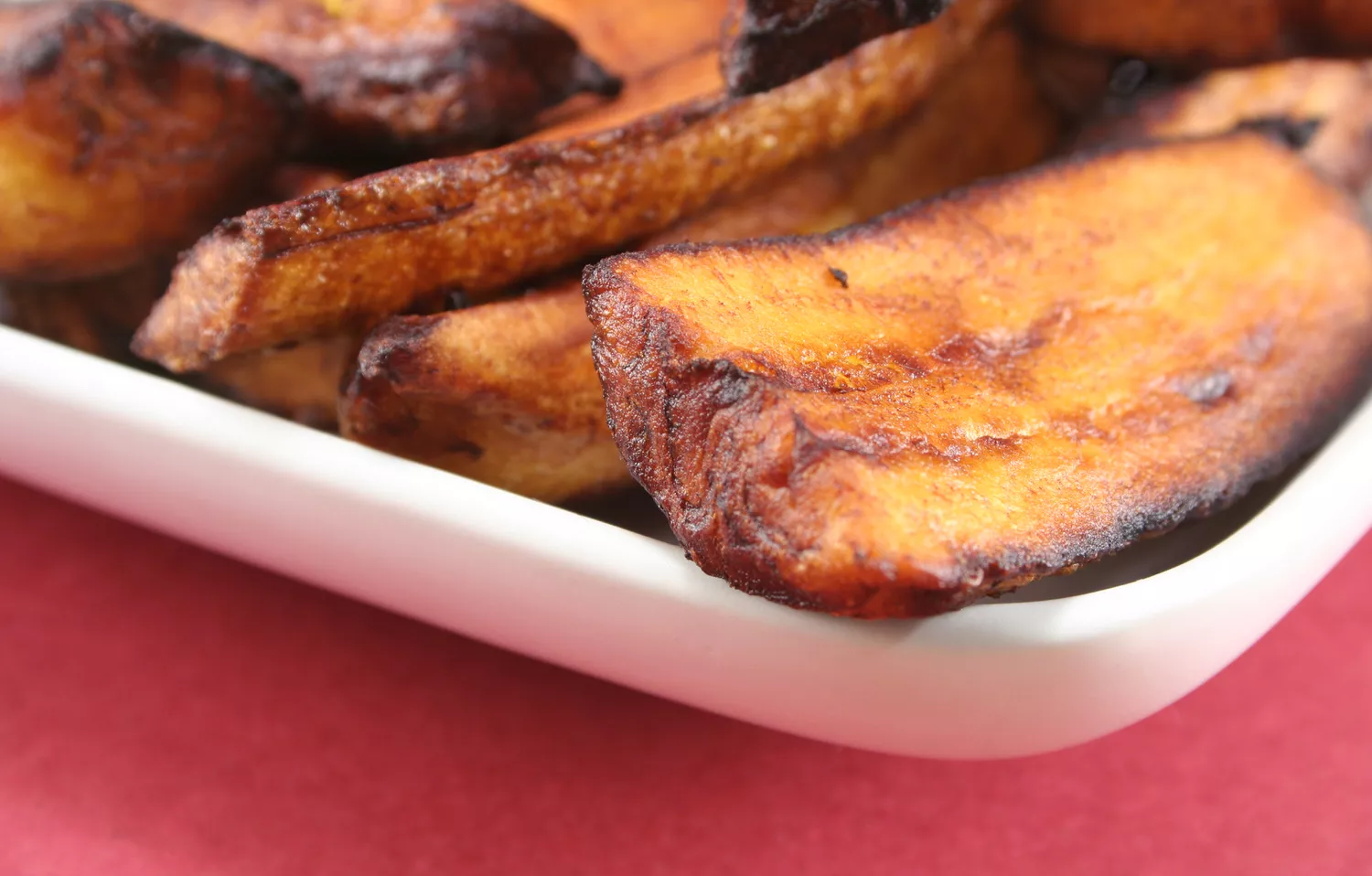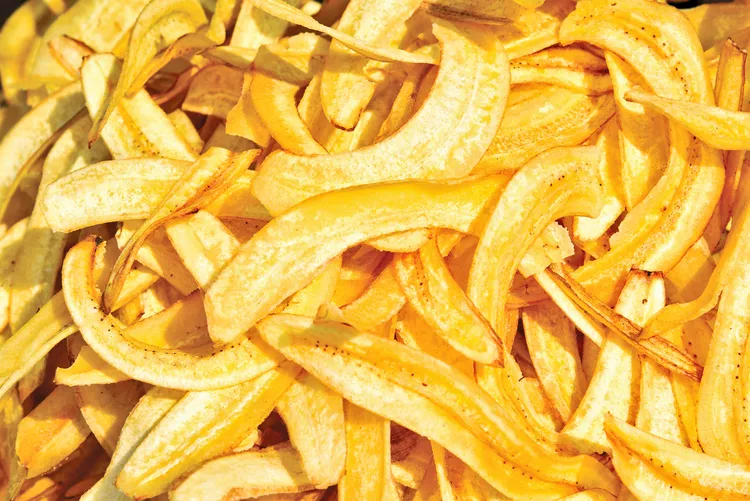Ask any Puerto Rican what their five favorite foods are, and we’re willing to bet at least two involve plantains. The plantain, the larger, tougher cousin of the softer, sweeter banana, cannot be eaten raw. However, when you cook it (and depending on how you cook it), you’ll discover a versatile ingredient that is incorporated into some of Puerto Rico’s most beloved and popular dishes. Green plantains have a starchy, bland quality to them (until you season them, of course), while ripe plantains are sweeter. You’d need to go out of your way to leave Puerto Rico without sampling the ubiquitous plantain, and honestly, we don’t recommend you do that. Instead, try one of these delicious dishes, all made with the tasty platano.
Mofongo

The most ubiquitous dish on the Puerto Rican menu, and probably its most recognizable “unofficial official” dish, is the mofongo. This mound of mashed green plantain and garlic can be served as a side dish or as an entree, stuffed with steak, chicken, shrimp, vegetables, pork, and other fillings. Consequently, if you eat only one authentic comida criolla meal while you’re on the island, make it a mofongo.
I’ve lost track of how many times I’ve tucked into one with relish, but I do remember the one I had at Don Tello was outstanding. Moreover, if you want to mix it up a bit, try a trifongo, which is made with green plantain, ripe plantain, and yucca: Vejigante Restaurant at the Luquillo kiosks has a delicious recipe.
Tostones

The quintessential side dish to practically any meal, tostones are hard baked cakes of mashed green plantain that are generously seasoned with salt. They are often served in lieu of bread and serve as a wonderful accompaniment to seafood dishes. For instance, at El Trapiche, you can enjoy tostones with an outstanding and biting fresh octopus “salad,” while Aguaviva cleverly serves them up with their signature ceviches.
Amarillos

Along with tostones, amarillos, or maduros as they may be called, aren’t unique to Puerto Rico. However, they are extremely popular here, and with good reason. The sweet counterpart to the savory tostones, amarillos, which means “yellows,” are absolutely superb when fried until the edges are crispy and golden brown.
You can find amarillos practically anywhere in Puerto Rico. They are best eaten when freshly made.
Arañitas
The name arañitas translates to “little spiders.” Don’t worry; no spiders were harmed in the production of this food (at least, they shouldn’t be!). Arañitas are named for their shape. They consist of shredded plantain clumped together and fried until crispy. The shreds that poke out from the fried clumps give them their name. Therefore, you can simply ignore that as you munch on these crispy treats.
Pastelón

If you enjoy lasagna, you need to try a pastelón, which is a plantain version of this Italian classic. Made with ripe plantains that are sweet, the dish provides a delightful contrast in tastes and textures. Ground beef is wedged between layers of sweet plantain and topped off with drizzled cheese, making it extraordinarily tasty.
Pasteles

A very typical Puerto Rican Christmas treat, pasteles are made with plantains or yucca (cassava) and filled with pork or ground beef, although there are all kinds of variations. They are then wrapped in banana leaves and boiled. Pasteles require significant time to make and usually turn into a group or family effort. Although they’re not as easy to find on a restaurant menu, keep your eye out for them; if you’re a fan of Mexican tamales, you’re likely to enjoy Puerto Rican pasteles.





